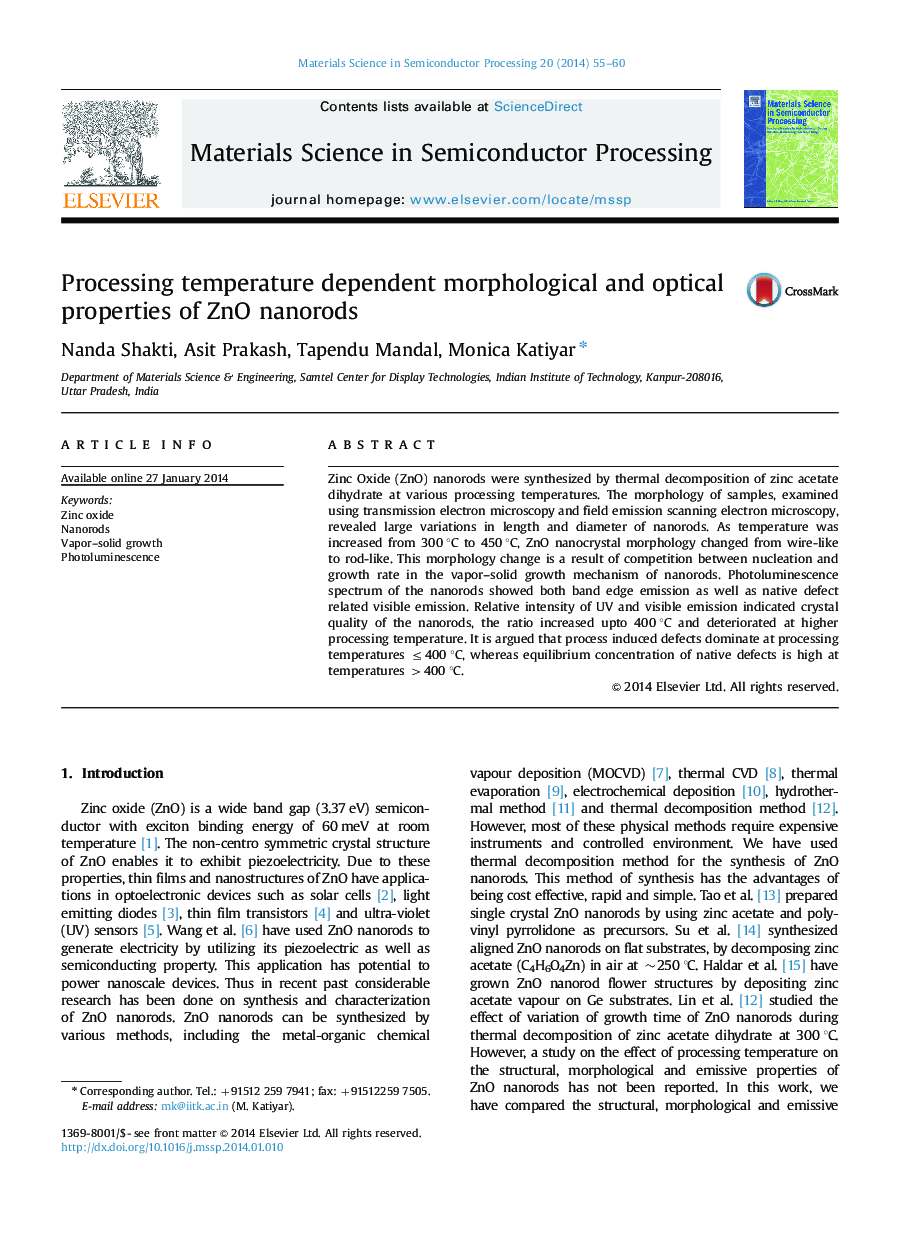| کد مقاله | کد نشریه | سال انتشار | مقاله انگلیسی | نسخه تمام متن |
|---|---|---|---|---|
| 728249 | 1461426 | 2014 | 6 صفحه PDF | دانلود رایگان |

Zinc Oxide (ZnO) nanorods were synthesized by thermal decomposition of zinc acetate dihydrate at various processing temperatures. The morphology of samples, examined using transmission electron microscopy and field emission scanning electron microscopy, revealed large variations in length and diameter of nanorods. As temperature was increased from 300 °C to 450 °C, ZnO nanocrystal morphology changed from wire-like to rod-like. This morphology change is a result of competition between nucleation and growth rate in the vapor–solid growth mechanism of nanorods. Photoluminescence spectrum of the nanorods showed both band edge emission as well as native defect related visible emission. Relative intensity of UV and visible emission indicated crystal quality of the nanorods, the ratio increased upto 400 °C and deteriorated at higher processing temperature. It is argued that process induced defects dominate at processing temperatures ≤400 °C, whereas equilibrium concentration of native defects is high at temperatures >400 °C.
Journal: Materials Science in Semiconductor Processing - Volume 20, April 2014, Pages 55–60